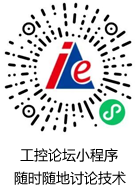CAN:技术介绍(英文) 点击:3485 | 回复:0
发表于:2002-02-01 09:49:00
楼主
CAN Technical introduction
How does it function
Principles of data exchange
Non-destructive bitwise arbitration
Efficiency of bus allocation
Message frame formats
Detecting and signalling errors
Data reliability of the CAN protocol
Extended format CAN message
Implementations of the CAN protocol
Overview
CAN controller with intermediate buffer
CAN controller with object storage
CAN slave controllers for I/O functions
Physical CAN connection
How does it function
Principles of data exchange
When data are transmitted by CAN, no stations are addressed, but instead, the content of the message (e.g. rpm or engine temperature) is designated by an identifier that is unique throughout the network. The identifier defines not only the content but also the priority of the message. This is important for bus allocation when several stations are competing for bus access.
If the CPU of a given station wishes to send a message to one or more stations, it passes the data to be transmitted and their identifiers to the assigned CAN chip ("Make ready"). This is all the CPU has to do: To initiate data exchange. The message is constructed and transmitted by the CAN chip. As soon as the CAN chip receives the bus allocation ("Send Message") all other stations on the CAN network become receivers of this message ("Receive Message"). Each station in the CAN network, having received the message correctly, performs an acceptance test to determine whether the data received are relevant for that station ("Select"). If the data are of significance for the station concerned they are processed ("Accept"), otherwise they are ignored.
A high degree of system and configuration flexibility is achieved as a result of the content-oriented addressing scheme. It is very easy to add stations to the existing CAN network without making any hardware or software modifications to the existing stations, provided that the new stations are purely receivers. Because the data transmission protocol does not require physical destination addresses for the individual components, it supports the concept of modular electronics and also permits multiple reception (broadcast, multicast) and the synchronization of distributed processes: measurements needed as information by several controllers can be transmitted via the network, in such a way that it is unnecessary for each controller to have its own sensor.




热门招聘
相关主题
- 担心GPRS模块不稳定?请看这里...
 [9316]
[9316] - RS485的多主机解决方案
 [1854]
[1854] - 现场总线开发同盟?
 [3596]
[3596] - PROFIBUS_DP干扰!
 [1521]
[1521] - 一本肯定对大家学习PROFIBUS...
 [1654]
[1654] - 终端匹配电阻
 [6670]
[6670] - DP总线是什么呀,
 [4666]
[4666] - 现代通信原理与技术视频教程...
 [1435]
[1435] - 新人请教:MODBUS和PROFIBUS,...
 [8742]
[8742] - 西门子PLC是从变频器里如何读...
 [1469]
[1469]

官方公众号

智造工程师
-

 客服
客服

-

 小程序
小程序

-

 公众号
公众号

















 工控网智造工程师好文精选
工控网智造工程师好文精选
